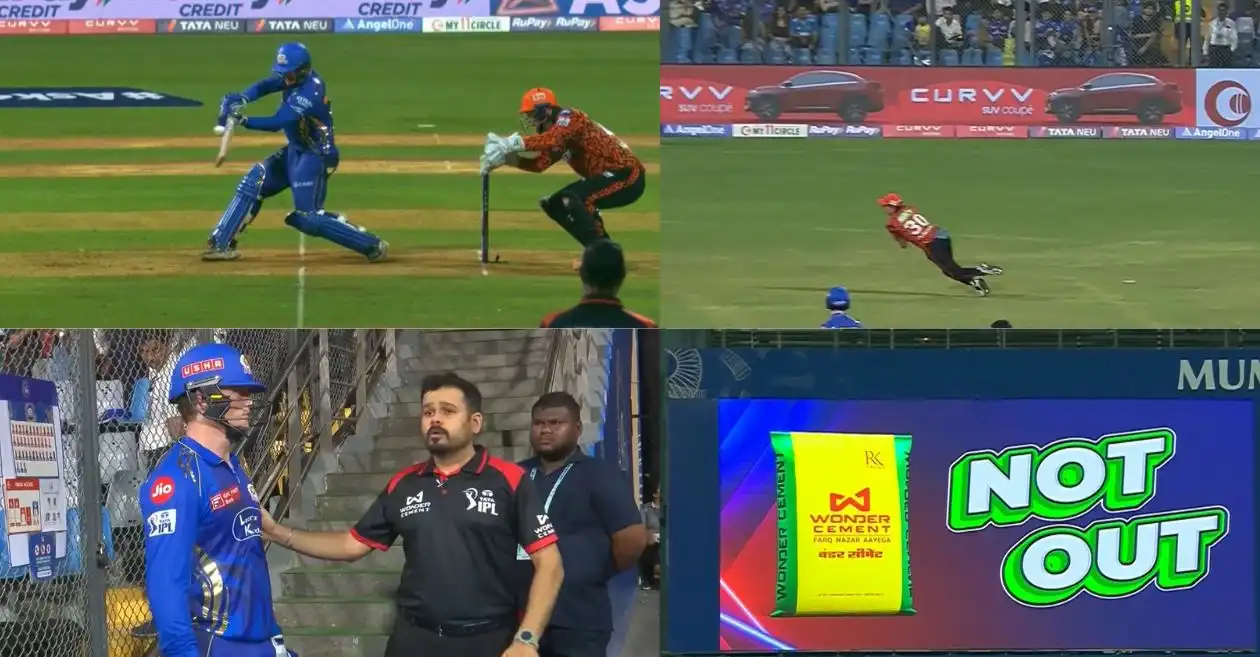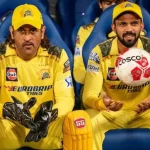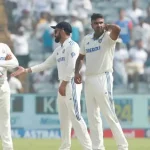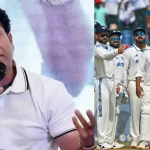In the glitzy and electrifying world of the Indian Premier League (IPL), drama is never far behind. Match 33 of IPL 2025 between Mumbai Indians (MI) and Sunrisers Hyderabad (SRH) was no exception. Played under the floodlights at the iconic Wankhede Stadium, what initially seemed to be a routine run-chase exploded into a moment of high-stakes controversy that had players, pundits, and fans on edge.
At the center of it all was Ryan Rickelton, Mumbai’s in-form South African opener, who found himself walking back to the dugout—only to be called back in a rare turn of events that raised eyebrows and invoked the intricate laws of cricket. The incident not only shifted the momentum but added another gripping chapter to IPL’s never-ending tale of high drama.
Let’s rewind and unpack everything from Pat Cummins’ brilliant athleticism, to Heinrich Klaasen’s split-second error, to Mumbai Indians’ calm and clinical chase of 163.
A Bright Start and a Steady Target
Sunrisers Hyderabad had posted a total of 162/7 in their allotted 20 overs after being asked to bat first. Their innings was anchored by Rahul Tripathi’s gritty 47, supported by Abdul Samad’s late flourish of 35 off 18, which propelled the visitors to a somewhat defendable score. The Mumbai pitch, though offering some turn, remained true under lights and was expected to ease out for the chase.
Despite the modest total, SRH had their hopes pinned on their pace spearhead Pat Cummins and rising spinner Zeeshan Ansari to deliver under pressure.
The Turning Point: A Catch, A Walk, and a No-Ball
It was in the seventh over of MI’s chase that the temperature in the stadium went from routine to explosive.
Zeeshan Ansari, who had been bowling tight lines until then, bowled a slightly short delivery that Rickelton pounced on. The left-hander cracked it towards short cover, where Pat Cummins displayed elite athleticism—diving forward, hands under the ball, and claiming what looked like a clean catch.
Rickelton, seemingly convinced, turned and began the walk back. Suryakumar Yadav, the next batter, was already making his way toward the middle. On-field umpire Kumar Dharmasena signaled the soft decision as “out,” sending the crowd into a celebratory frenzy.
But then came the twist.
Before the play could resume, the third umpire, Anil Chaudhary, intervened. As the catch was being reviewed for verification, another element caught his eye on the replay—Heinrich Klaasen’s gloves. While Cummins’ catch appeared clean from multiple angles, the third umpire zoomed in on Klaasen’s position behind the stumps at the moment of delivery.
The slow-motion replay revealed that Klaasen’s gloves had inched past the stumps before the ball was played—triggering a technical infraction under Law 27.3.1 of the MCC Laws of Cricket. According to the law:
“The wicket-keeper shall remain wholly behind the stumps from the moment the ball comes into play until it either touches the bat or person of the striker or passes the stumps.”
Even though Klaasen hadn’t touched the ball, his premature glove positioning alone was enough to render the delivery illegal.
The verdict: No-ball. The catch did not stand. Rickelton was recalled. MI were awarded a free hit.
Reactions and Ripples: Confusion, Frustration, and Relief
The fallout was immediate.
The SRH players, especially Cummins and Klaasen, were visibly stunned by the decision. Cummins, who had taken a blinder, could only let out a wry smile and raise his arms in disbelief. Klaasen, usually known for his meticulous wicketkeeping, appeared momentarily frozen, his helmeted head shaking slightly in regret.
On the other hand, Mumbai dugout erupted with relieved chuckles. Rickelton, clearly surprised but thankful, took his helmet off, nodded toward the third umpire’s booth, and returned to the middle with renewed determination.
Social media exploded. Fans flooded platforms with clips and screenshots of the replay. While some praised the third umpire’s sharpness, others criticized the rule as too harsh for a minor misstep that didn’t influence the catch.
Rickelton’s Redemption and Mumbai’s Chase
Given a second lease of life, Rickelton added 10 more valuable runs to his tally, including a pair of elegant boundaries through the off-side. Though his innings was cut short at 31 off 23 balls by a well-executed slower ball from Harshal Patel, the momentum had decisively swung in MI’s favor by then.
Will Jacks, MI’s explosive English import, continued his fine form with a solid 36 (27), peppered with two sixes and four boundaries. He maintained a brisk run rate and kept the pressure on the SRH spinners.
But the real icing on the cake came in the form of cameos from two of MI’s biggest icons – Rohit Sharma and Suryakumar Yadav. Rohit, calm and assertive, smacked 26 off just 14 balls, reminding everyone of his vintage powerplay prowess. SKY, coming in after Rickelton’s dismissal, matched Rohit stroke-for-stroke, scoring a brisk 26 (16) of his own, with that signature flair of flicks and scoops.
The match wrapped up in the 18th over, with MI securing a four-wicket win and 11 balls to spare. Their chase was clinical, composed, and capped off a performance that blended dominance with discipline.
SRH’s Spirited Yet Flawed Outing
For SRH, the match will be remembered not only for their spirited bowling effort but also for what could have been had the controversial catch stood. Cummins led from the front, not just with his fielding brilliance but also with the ball, conceding only 25 runs in his 4 overs. Zeeshan Ansari’s figures (0/33) were slightly inflated due to the controversy but his lines remained disciplined throughout.
Harshal Patel continued to show his value as a death bowler, picking up 2 wickets and executing his slower deliveries to near-perfection. But it was the missed opportunity via Klaasen’s gloves that ultimately became the defining moment.
Law 27.3.1 and the Keeper Conundrum
What made this incident particularly intriguing was how rarely this specific clause is enforced. Most wicketkeepers are well-trained to remain behind the stumps until the ball passes or makes contact. But in high-pressure environments like the IPL, where milliseconds count, even seasoned players like Klaasen can slip up.
Law 27.3.1 exists for a reason—it prevents wicketkeepers from creeping forward prematurely and potentially gaining an unfair advantage, especially in situations involving stumpings, catches off the edge, or bat-pad deflections.
Though it did not impact the catch directly, the fact remains: rules are rules, and in cricket’s modern era of high-definition replays and micro-decisions, every inch matters.
The Bigger Picture: What This Means for MI and SRH
For Mumbai Indians, the win is a shot in the arm. Their campaign in IPL 2025 had been oscillating between promise and inconsistency, but this performance was a glimpse of what the team is capable of when their stars click in unison. The return of form for Rohit and SKY, along with Jacks and Rickelton’s top-order stability, bodes well for their playoff aspirations.
For Sunrisers Hyderabad, this match will hurt—but it also offers lessons. They showed discipline with the bat, flair in the field, and intent with the ball. Yet, it was a rare technical error that cost them dearly. The game will likely lead to renewed focus on glove discipline during training, not just for SRH but for teams across the league.
A Match Etched in Technicality and Tenacity
IPL 2025 continues to be a tournament of surprises, and Match 33 delivered one of the most curious and memorable moments of the season. Ryan Rickelton’s walk-off and walk-back sequence will be replayed for years to come—not for the shot, nor for the catch—but for a pair of gloves that ventured just inches too far, too early.
For MI, the night ended in celebration. For SRH, it ended in introspection. And for fans? It was another reminder that in cricket, no detail is too small, no moment too insignificant.
Because as it turns out, sometimes the real drama begins after the catch is taken.
Please check for information on the best betting sites in India – https://selectory.org/best-betting-sites/















